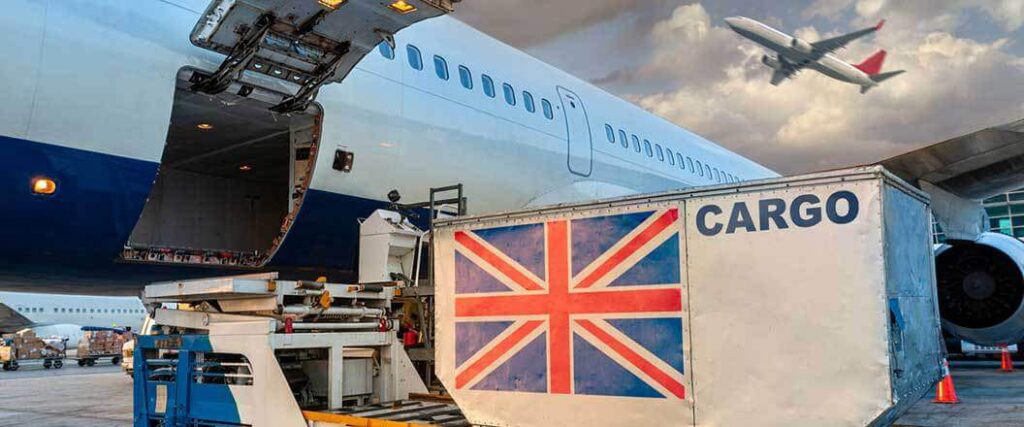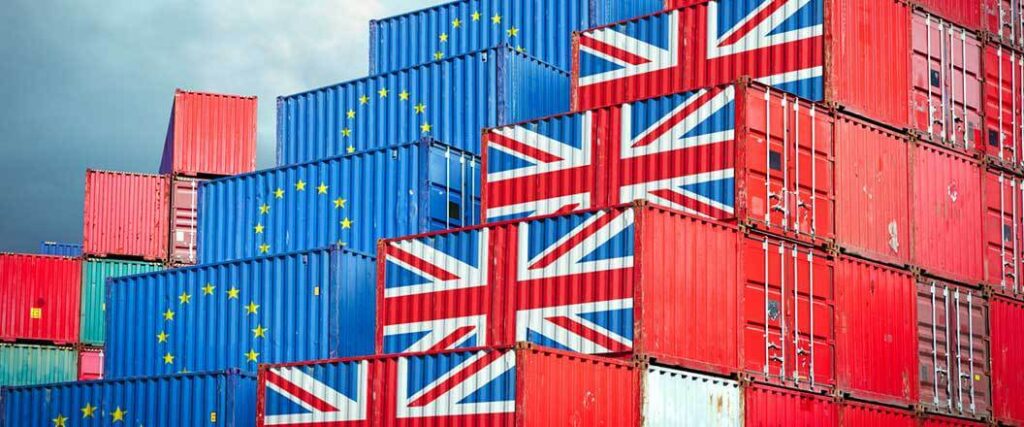Exporting to the United Kingdom (UK) is popular for U.S. businesses thanks to the fact that the UK is one of the easiest nations to trade with. Since the beginning of American history, a trade relationship has existed between the U.S. and the UK. However, in recent years, the type of goods and the volume of goods traded between these two countries has increased.
When exporting to the UK, you must adhere to U.S. export controls set by the US International Trade Administration (ITA). If an export license is required, the Bureau of Industry and Security Export Administration (BISEA) reviews and approves all license applications while enforcing Export Administration Regulations (EAR).
If you are looking to do business in the heart of the English Commonwealth, then look no further. This article discusses the ins and outs of exporting goods to the UK.

Trade between the center of the British Commonwealth and the United States (U.S.) has a long and storied history. From the founding of the colonies to the birth of a nation, the U.S. continues to enjoy its long-standing relationship with its cousins across the Atlantic Ocean.
The U.S. and UK relations couldn't be any more amicable. These two countries share a kinship and common bond with each other that most nations do not, including being strong military allies.
Rocky trade relations and trade barriers exist between countries like the U.S. and Russia, including the natural language and culture barrier. The U.S. and UK don't have this problem, which makes trading with the UK a snap.
Here are some statistics that exemplify the value of trade relations between the U.S. and the UK.
As you can see, due to this impeccable trade relationship and the commonality of both language and culture, exporting to the UK has never been more favorable. Of course, trade with the UK goes both ways.
The British are a top 10 exporter to the US, with over $63 billion in trade coming from the UK and accounting for almost three percent of all U.S. imports in 2019. The trade balance between the two nations is 10% in favor of U.S. exports to the UK.
You can also try exporting to Ireland, the UK's neighbor to the West.
Exporting to the UK after Brexit isn't all that different than it once was. The rules and regulations surrounding exports of goods into the European Union (EU) versus the UK are slightly different.
The British have taken back control over its country's interests upon leaving the EU. These interests include its autonomy to conduct foreign trade under its own ruleset. Like Norway, the UK operates outside the ruleset of the European Commission and has established trade agreements on its own outside the EU.
The following points illustrate the vision for the post-EU era.
It is critically important for Parliament to take any and all steps to smoothen the transition of the economy from the EU back to its own self-sufficient nation. In the post Brexit UK, there is a massive focus on bringing back the identity of the nation.
Following Brexit, there has been meticulous changes to trade regulations. While some rules that are part of the EU strategy have remained unchanged. Other restrictions or processes have changed completely.
Moving forward, the UK has vowed to collaborate with businesses to reform the framework of regulations to promote fast and efficient economic growth, stability, and the acquisition of new market opportunities worldwide.

Like many countries in the world, Great Britain imports many commodities from the U.S. Like other countries in the Commonwealth of Nations, Canada shares sovereigns and import interests similar to the UK.
The most popular imports in Canada are nearly identical to the UK's. With energy, machinery, precious metals, and electronics leading the way, these two nations strongly desire American goods.
| Commodities | Export Value |
| Precious Metals | $14 Billion |
| Aircraft and Parts | $10 Billion |
| Mineral Fuels | $7 Billion |
| Machinery | $6 Billion |
| Electronics | $5 Billion |
There has been a recent push by U.S. trade representatives to promote importing American agricultural products into the UK, like beef, pork, chicken, and vegetables. These products have an annual export value of around $3 billion annually and growing.
Other commodities from the U.S. also do really well in the UK. American goods like cars and pharmaceuticals also have an important place in the economic footprint of the UK.
When considering the possibility of exporting goods to the UK, there are formalities to consider and prepare for if you want to export successfully. Getting your goods out of a U.S. port bound for the UK successfully is one thing. Getting them cleared through British customs is a different matter.
Clearing customs often requires an export consultant's helping hand to answer questions about a particular export task. For each part of the export process, there will be a department or agency directly involved that can answer any question.
Because of the many challenges involved in exporting, it would be best to familiarize yourself with the various departments and agencies involved or can become applied when shipping to the UK.
The following are UK-based departments and agencies which may be involved with your exports. In any event, the DIT and NCH should be your first stop for questions surrounding your shipment into the UK.
Compliance is the name of the game when exporting goods to another country. Exporting requires incredible attention to detail and adherence to the law. Cruise through the red tape easily by following the rules and complying with the importing nation's requests.
Let an expert consultant be your guide. Expert help can be the difference maker in avoiding extra fees, delays, and seizures at a foreign port. Speaking with an export consultant will get you on the right track and ensure you complete all export requirements safely.
Exporting to the UK requires proper compliance, attention to detail, and respect for the country’s laws and customs. Penalties for violating a country's export controls can land you in hot water.
One of the most significant resources that pertain to an international shipment is goods classification under export controls. Once you have identified who has legal jurisdiction over your shipment, you must follow up with that agency and get authorization if required.
For example, the ITA has instituted guidelines for its export controls here, including several departments dealing with Export Administration regulations daily. You should consult with an expert to help determine who has jurisdiction over your shipment.
You must always be careful with product classifications. Any penalties which result from improper classification can lead to a host of negatives, such as jail time or heavy fines. Utilize any tools and resources at your disposal to make an accurate classification.
To effectively export goods to our friends across the pond, you must collect the following:
Complete Documentation: All documentation must be completed and distributed to the right source and on time. Some examples of required documentation when exporting to the UK are:
Clearing British customs seems like a complex process, but as long as you are prepared and thorough, it will be smooth sailing. Exporting the right way means you must meticulously file documentation and make all necessary payments on time.
Our world changes daily, and what is acceptable today may not be sufficient tomorrow. The documentation process, including the facilitation of all compliance-related issues, is best answered by a certified export consultant. In any event, seek out the help and assistance of a professional.
Here at Cargo Export USA, our priority is you and your cargo. Our industry experts are ready to answer your export questions today. Let us get the answers you need so that your goods make the trip to the UK quickly and successfully.

For taxes and duties on commodities entering the UK, understanding commodity codes is one of the most critically important things to know and apply in your shipment. Getting the code right the first time will keep you out of trouble when exporting.
Goods processed for export in the U.S. will need a Schedule B Number to buy the USCB to track global export trade. In some cases, taxes associated with Schedule B will be required depending on the commodity.
The UK has a flat VAT tax of 20% on goods entering the UK from the U.S. Certain products can get a reduced 5% VAT rate reduction on goods like a child or utility-related products. This reduction can even be zeroed out depending on the commodity.
Harmonized System (HS) Codes are similar to Schedule B Numbers because they are commodity-based classification codes. The sole purpose of HS codes is to gather statistics on a commodity while collecting data to establish what duties and taxes are required.
With solid trade partnerships comes substantial advantages. As an exporter based in the U.S., there are many distinct advantages to doing business in the UK. The market there is extremely hungry for American-made products and technologies.
Markets like goods and services, transportation, renewable energy, security, and tech are the beneficiaries of this multi-billion dollar initiative in a post-Brexit United Kingdom. There has been an increasing demand annually for U.S. goods.
The U.S. has enjoyed a steady market share with the UK and a consistently positive trade rate. The annual rate of exports increased by over two percent each year. The export market for goods bound for the UK is up-and-coming.
There is an inherent challenge that comes with the territory of exporting goods overseas that needs to be replicated in domestic distribution. Language, cultural, currency, and regulatory issues often get in the way of international trade.
Fortunately, in the case of the UK, many of the challenges that come into play when exporting to foreign nations aren’t quite as numerous or challenging. This modern country has diplomatic ties and a common culture, making it far less of a challenge than you might think.
While these challenges may seem difficult to overcome, they are naturally supplanted by the benefits of trading with the UK. With the assistance of various departments and agencies within the U.S. and the UK, there will be little difficulty in overcoming any of these hurdles.

Within the realm of English ports, some are more desirable than others due to their ability to handle specific volumes of trade or their close proximity to the final destination of your shipments.
This statement extends to both ocean and air ports of entry. In the modern era, air transport is a prominent way to export certain goods overseas that are more sensitive to the elements or have a high value, like jewelry and electronics.
| Port | Annual Cargo Tonnage |
| Port of Grimsby and Immingham | 59 Million Metric Tons |
| Port of London | 45 Million Metric Tons |
| Port of the Milford Haven | 34 Million Metric Tons |
| Port of Southampton | 33 Million Metric Tons |
| Port of Liverpool | 32 Million Metric Tons |
The table above illustrates the amount of traffic and import/export processing that flows through these ports annually. You will want to select a port of entry based on its ability to process and clear your exports and their relative distance to your destination.
| Port | Annual Cargo Tonnage |
| Heathrow | 1.1 Million Metric Tons |
| East Midlands International | 382 Thousand Metric Tons |
| Stansted | 255 Thousand Metric Tons |
| Manchester | 49 Thousand Metric Tons |
| Lutton | 31 Thousand Metric Tons |
The airports listed above show the raw amount of goods in metric tons transported to these ports of entry annually. As mentioned, air transport generally revolves around time, element-sensitive goods, or luxury items of great value.
When exporting goods into the UK, you should always prioritize who can handle your exports promptly and which port is closest to your exported goods' destination. The table above offers insight into which ports handle the most traffic and where they are in the UK.
As an exporter, fast and safe transportation is critical to your business and relationships with overseas trade partners. It would be ideal if you only worked with the best when shipping your goods to the United Kingdom.
Cargo Export USA has expert consultants standing by, ready to answer any questions you may have concerning your exports. Cargo Export USA has an extensive suite of services to help you along the way.
Choose a partner with experience handling export shipments for all kinds of products.
When exporting goods to other countries, it doesn't matter if you are a rookie or a seasoned veteran. Rules, regulations, customs, and much more are all country-specific. You will require expert help and guidance. That's where we come in, ready to help at a moment's notice.
Our experts can assist you with confidence at (866) 301-0635, or click here for a quote today. Get ready to experience best-in-class service and support with Cargo Export USA; your one trusted export partner.